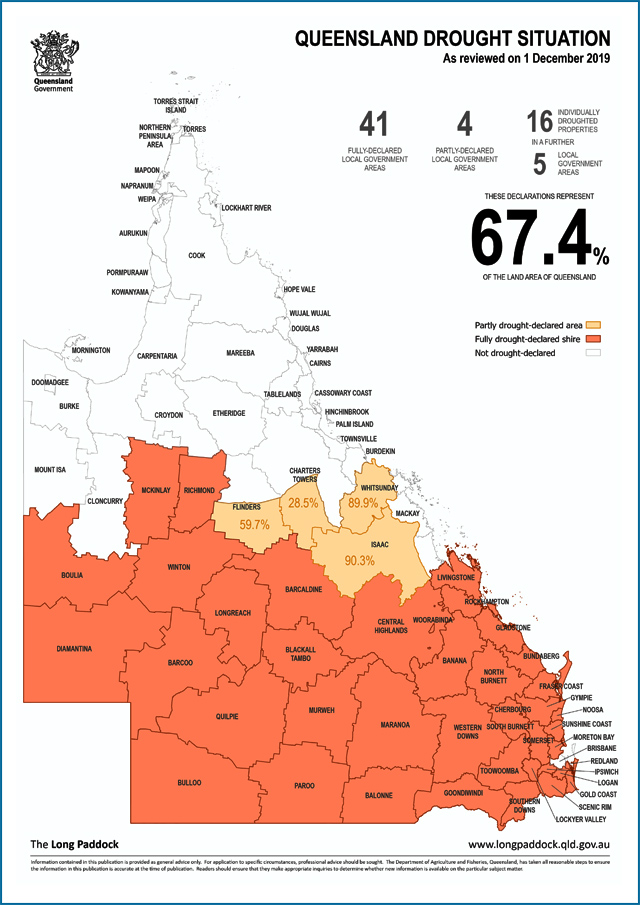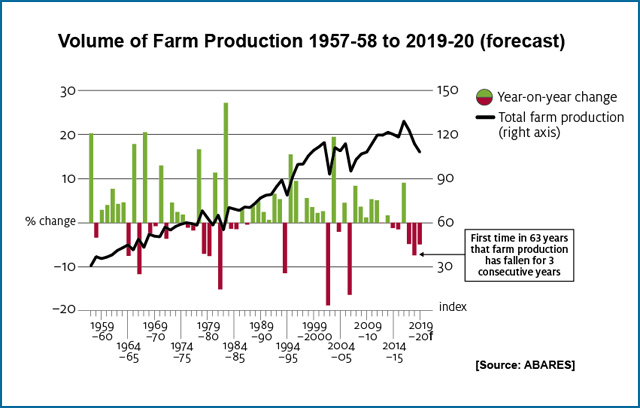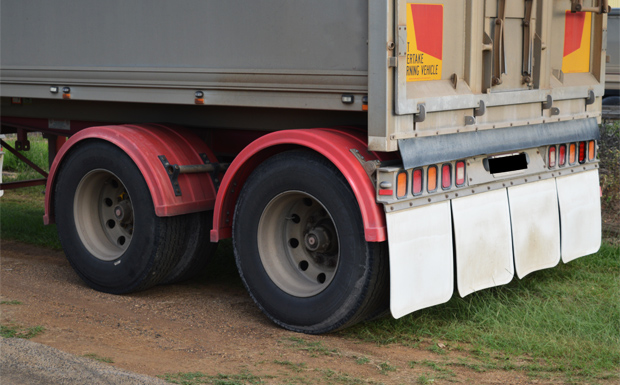
December 10, 2019
Almost 68 per cent of Queensland is now officially in drought, with Gympie Regional Council added to the drought-declared list.
There are now 41 councils and four part-council areas drought declared plus 16 individually droughted properties (IDPs).
Agriculture Minister Mark Furner said he had accepted the recommendations of local drought committees to add eight more council regions to the list from December 1.
Shadow Agriculture Minister Tony Perrett said these declarations were long overdue, particularly Gympie which has significant agricultural industries.
Farmers in the western parts of the GRC area – around Manumbar, Elgin Vale, Kilkivan, Widgee, Woolooga, Tansey and Booubyjan – have been struggling for some time.
The former Gympie Deputy Mayor said it was vitally important farmers now eligible took advantage of the support on offer.
Producers experiencing difficult conditions in a Council area that is not drought-declared, can apply for an IDP declaration.
This gives the same access to Queensland drought assistance as an area declaration.
The State Government has employed additional drought assessment officers in Toowoomba, Kingaroy and Rockhampton.
* * *
Federal Drought Minister David Littleproud has called on States “to pull their weight” on drought support.
He said the Federal Government was providing “up to $224,000 a year” in support to farmers.
Mr Littleproud supplied the following figures for maximum potential direct drought support by State governments per year: NSW $69,175; Queensland $39,129; Victoria $25,235; Tasmania $7500; South Australia $0 (under review); Western Australia $0; and Northern Territory $0.
Mr Littleproud also called on State governments to step in and pay Council rates for farmers in drought and provide Crown Lease “holidays”.
“It’s just not fair to charge rent on unproductive land,” he said.
“They can also give payroll tax exemptions to businesses dependent on agriculture, like the local meatworks.”
* * *
The effects of the continuing drought are becoming more pronounced with falling production and high input costs presenting serious challenges in many regions, according to the ABARES’ Agricultural Commodities report for December released on Tuesday.
Chief Commodity Analyst Peter Gooday said the total volume of agricultural production was forecast to fall for a third consecutive year, which hasn’t happened for more than 60 years.
“The value of agricultural production is forecast to fall by 3 per cent this year, but still remain high at almost $61 billion, supported by strong demand for livestock products resulting from the African swine fever outbreaks across Asia,” Mr Gooday said.
“We’re expecting to see higher prices year-on-year for cattle, sheep, lambs, pigs and goats which will partly offset the decline in production.
“Winter crop production has been revised down after a challenging spring in many regions and the poor conditions will see continued turnoff of livestock but production is expected to fall as fewer animals are available for slaughter.
“Fodder availability is likely to be higher in 2019-20 than last season and prices are expected to fall, but they are likely to remain well above average. A poor summer crop could add pressure to prices later in the year.
“The value of agricultural exports is forecast to fall by 8 per cent to $45 billion, The main drivers of this are lower crop and livestock production and a diversion of grain to the domestic market for feed and human consumption.
“While cropping can be expected to rebound quickly once seasonal conditions improve, the livestock sector will require a longer period for pasture to recover and begin herd rebuilding—the national cattle herd is forecast to fall to the lowest level since the early 1990s.”
- External link: The ABARES report

























